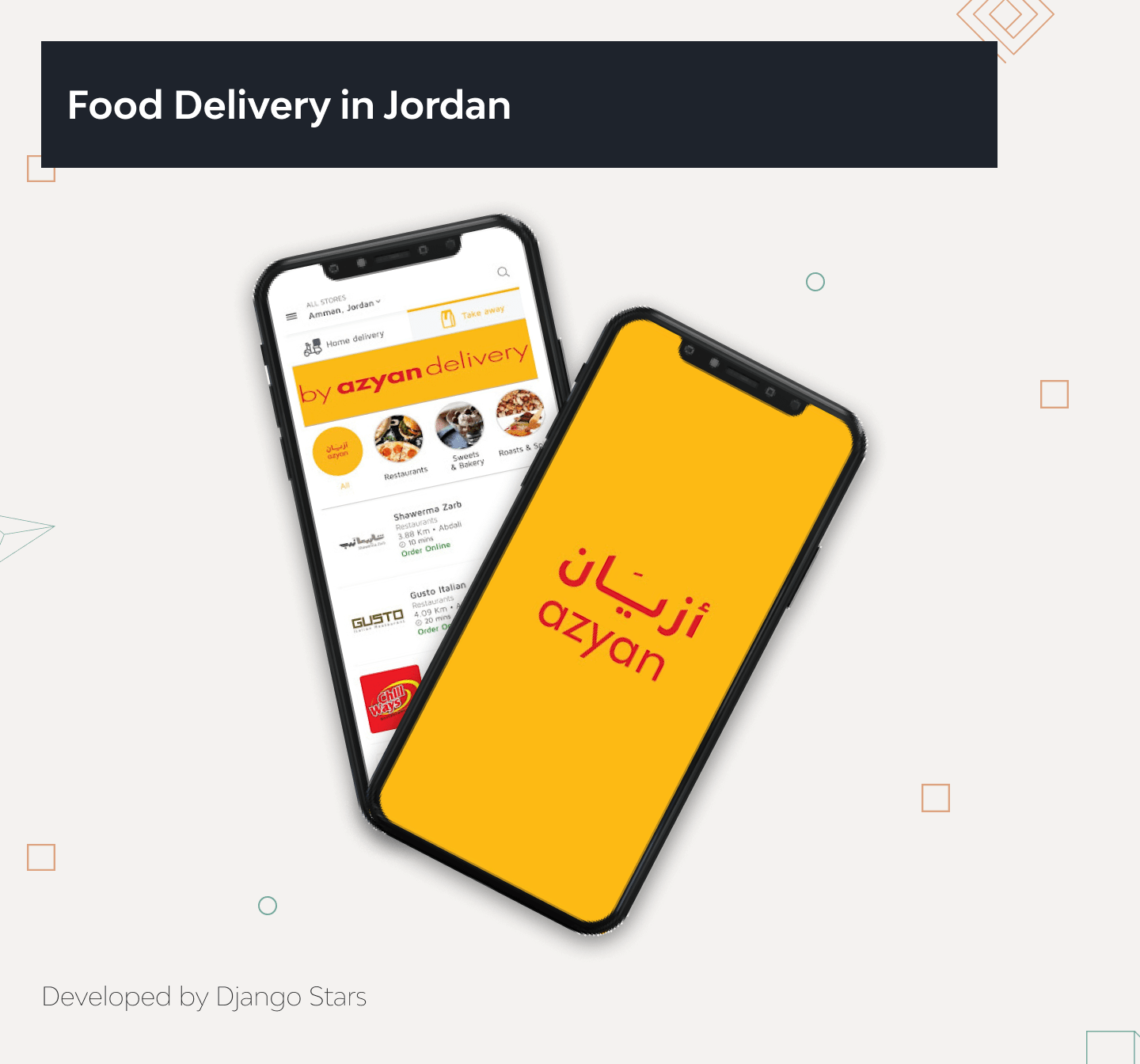Why Is Real-Time Tracking the Future of Logistics?
As per Facts & Factors, the global logistics market, valued at USD 4.09 billion in 2022, is set to leap to an impressive USD 12.09 billion by 2030, a CAGR of 17.1%. This isn’t solely the work of giants like Amazon or FedEx. Technologies like integrated logistics management tools steering this growth.
Real-time logistics tracking is making waves in various sectors. It not only fine-tunes Amazon’s vast delivery network and keeps Walmart’s inventory robust, but also enriches your Uber Eats experience and helps hospitals track crucial assets.
This isn’t a peek into the distant future. It’s the reality today. Logistics tracking is enhancing real-time visibility, boosting customer satisfaction and reshaping operational optimization across industries. Harnessing logistics real-time analytics empowers organizations to make data-driven decisions swiftly and confidently.
![]()
Pivotal Benefits of Real-Time Tracking in Logistics
The ascent of real-time tracking in logistics is more than a technological upgrade. It provides stakeholders with vital tools and capabilities to enhance their operations.
Path Illuminating: Transparency and Control
One of the real-time tracking benefits is the transparency it introduces to logistics operations. Companies can keep a finger on the pulse of their logistics operations. They can track the location of their fleets in real time. Or they can receive instantaneous delivery status updates, and assign new orders based on a truck’s location, capacity, and schedule. It optimizes resource allocation, leading to increased productivity and profitability.
Efficiency and Cost Savings Driving
The introduction of real-time tracking has been a boon for logistics efficiency. It gives birth to possibilities like route optimization. Algorithms analyze traffic conditions and delivery windows, determining the most efficient routes. This intelligent routing results in significant reductions in fuel consumption and maintenance costs. Over time, these savings accumulate, providing a noteworthy boost to the company’s bottom line.
Customers First: Enhanced Customer Service
Long gone are the days when customers would wait for their orders without a hint about when they would arrive. Logistics real-time monitoring provides customers with accurate delivery times and live updates. What is the result? A significant enhancement in customer confidence and satisfaction.
AI and Machine Learning Integration
The inclusion of AI and Machine Learning technologies into the mix takes real-time tracking to a whole new level. They provide the backbone for predictive analytics, a system that can foresee potential disruptions, propose alternative routes, and even predict maintenance issues before they occur. Such preemptive measures further streamline operations, minimizing hiccups and delays. By integrating logistics real-time analytics, companies can mitigate risks and respond promptly to unforeseen challenges in the supply chain.
Real-Time Tracking Applications: Wide Spectrum of Usage
The power of real-time tracking is not confined to the realm of logistics. Its versatility and utility extend to various sectors, leaving a mark on many facets of our daily life.
E-commerce behemoths like Amazon and Walmart have set the standard by implementing real-time tracking. By allowing customers to track their orders from the point of purchase to doorstep delivery, they have redefined customer experience and set new trends in the industry.
The impact of real-time tracking is also evident in food delivery services like Uber Eats, DoorDash, and GrubHub. These apps enable customers to track their orders as they move from the restaurant to their doorstep. Such transparency doesn’t just inform, but it also reassures customers about their order’s status and timing.
On the transportation front, rideshare apps like Uber and Lyft are capitalizing on real-time vehicle tracking. Riders can see their drivers’ live locations, get precise ETAs, and map out the best routes. This feature doesn’t only save time but also adds a layer of safety, trust, and transparency to the user experience.
![]()
Navigating Logistics Management with Tailored Software Solutions
E-commerce businesses find themselves in various logistical environments. Each has unique requirements for managing operations.
Let’s explore some software types or logistics products crafted for e-commerce enterprises:
Customer Relationship Management (CRM) Systems
CRM systems serve as a central hub, offering control over delivery across all coordination chain stages. They assign tasks to pertinent staff automatically and unify essential tools in one interface. As such, CRM systems integrate with other company programs, allowing effective strategy planning using exact analytical data. When creating a CRM system to streamline logistics, we take into account all specific operations. This attention to detail elevates the effectiveness of custom-built software compared to pre-existing solutions.
Warehouse Automation & Coordination Software: software mentioned is an asset for logistics optimization. It simplifies the recording, management, and distribution of inventory, assisting in an effective delivery process. These systems often link customer satisfaction with the company’s logistic tracking, enhancing efficiency.
Apps for Drivers
Typically installed on smartphones, these apps are an essential part of coordination management software. They provide drivers with optimal route organization, document handling, and vehicle maintenance information.
E-Commerce Logistics Management Software
These real-time tracking systems in logistics are custom-built to optimize logistics operations for e-commerce companies. They store details about cargo, customers, warehouses, fleets, drivers, and transport schedules, offering an all-in-one solution for efficient logistics management. Also, real-time analytics for logistics empowers logistics managers to optimize warehouse operations by monitoring storage capacity and demand fluctuations in real-time.
Real-time tracking is no longer a luxury but a necessity in the modern logistics industry. It provides much-needed transparency, optimizes route efficiency, enhances customer service, and ultimately, drives cost savings. However, implementing real-time tracking requires careful planning and a comprehensive understanding of costs.
Implementation Roadmap
Step 1: Identifying the Need
Start by pinpointing your business needs. Suppose your company frequently experiences late deliveries because of inefficient routing. In that case, your goal may be to enhance delivery efficiency. Or, if you face challenges in keeping customers informed about their delivery status, improving customer communication might be your insight. Every business will have unique needs that should guide your tracking solution’s design.
Step 2: Technology Assessment
You’ll need to understand the core technologies involved in real-time tracking. GPS devices, for instance, track vehicle locations with accuracy within meters. IoT sensors collect data such as vehicle speed, fuel level, and engine status, giving you a detailed understanding of fleet performance. Software platforms analyze and visualize this data in user-friendly formats, enabling your team to make informed decisions quickly. Research these technologies and how they can be configured to meet your specific needs.
![]()
Step 3: Vendor Selection
Identifying a reliable vendor is the next step. You might choose a company known for its comprehensive real-time fleet tracking solutions. Consider the vendor’s technical expertise, industry reputation, pricing, and alignment with your needs. Ask for case studies or client references to get a sense of how they’ve performed in past real-time logistics solutions similar to yours.
Step 4: Integration and Testing
After selecting a vendor, it’s time for integration and testing. This phase involves connecting the tracking system to your existing IT infrastructure like your Enterprise Resource Planning (ERP) or Customer Relationship Management (CRM) systems. Testing is then conducted to ensure seamless data flow between systems. For instance, vehicle location data should be accurately reflected in your ERP system, and any technical glitches must be ironed out promptly.
Step 5: Training and Deployment
Once testing is successful, move on to training and deployment. Your vendor should provide training sessions to your staff, ensuring they understand how to operate the system. They might use a dashboard to view real-time vehicle locations, analyze fuel efficiency trends or monitor vehicle maintenance schedules. After all the users are comfortable with the system, it’s then rolled out across your business. Effective user adoption is crucial for your new system’s success.
Cost Estimation: DIY vs. Outsourcing
Implementing real-time tracking isn’t without its costs. If you choose to do it yourself (DIY), your direct costs will include:
- Hardware Costs. The costs of GPS devices and other necessary IoT devices.
- Software Costs. The costs of purchasing and licensing software platforms for data analysis and visualization.
- Implementation Costs. The costs of your time or your team’s time to implement the system.
- Maintenance Costs. The costs associated with updating and maintaining the software and hardware.
Choosing to outsource your real-time tracking implementation involves different costs:
- Development Costs. Including costs of developing a custom tracking solution that meets your specific needs.
- Integration Costs. Including the costs of integrating the tracking system into your existing operations.
- Maintenance and Support Costs. Including the costs of ongoing maintenance and support provided by the outsourcing company.
When calculating the costs of DIY vs. outsourcing, you should consider not the immediate costs but also the long-term costs and benefits. Outsourcing can often provide better value for money as it allows you to leverage the expertise of a specialist company. Moreover, it can free up your time and resources to focus on your core business activities.
Django Stars: Unleashing the Power of Real-Time Tracking
Django Stars is an outsourcing logistics software development partner that specializes in creating custom, user-friendly real-time tracking solutions. We have a profound understanding of the logistics industry challenges. We are equipped with the necessary skills and expertise to develop effective solutions.
Our partnerships speak volumes about our capabilities. A collaboration with a U.S. logistics company led to improvements in their logistics and real-time visibility, operational efficiency, and a significant reduction in transportation costs. Our partnership with a Jordanian food delivery service hinged on real-time tracking to bolster customer satisfaction and business growth.
Case Study 1: U.S. logistics Company
Our partnership with a leading U.S. logistics company stands out at Django Stars. This company had a complex problem. They were struggling to manage orders across different locations. These locations included restaurants, physical addresses, and hubs. We offered a solution: real-time logistics data tracking.
We used our advanced GPS tracking and software system for this task. This integration gave supply officers real-time access to crucial information. They could see order receipts, the status of raw materials, shipping details, and regulatory data. The status of orders was also visible in real time.
This new level of real-time visibility in logistics had a big impact. Processes that were once difficult to manage became clearer and more efficient. The company could now precisely plan, schedule, and monitor their logistics. This clarity reduced uncertainties and improved decision-making.
Operational efficiency and productivity saw a significant increase. Transparency improved customer satisfaction. Logistical efficiency led to reduced transportation costs. The company also gained a competitive edge in the challenging logistics industry. This success story shows the power of real-time tracking.
Case Study 2: Food Delivery in Jordan
Django Stars is proud of its ability to adapt. We proved this in our partnership with Azyan. Azyan is a food delivery service based in Jordan. They’re known for their fast deliveries from restaurants and shops.
We started our journey with Azyan on a small scale. We provided one expert to assist them in the pre-development stage. Over time, our involvement grew. We expanded our team to include eight experts. Azyan decided to delegate all technical work to our team. They chose to focus on their core business expertise.
Why did Azyan choose Django Company? We’re known for combining business vision with cutting-edge technology. We used our strengths in web and mobile solutions to support Azyan’s operations. Our work ensured their platform could scale up to support their growth plans.
With our help Azyan streamlined its processes. Their service became more reliable. As a result, they set a new standard for food delivery in Jordan. This partnership reflects our commitment to using technology for business growth and customer satisfaction.

Conclusion: Embracing the Power of Real-Time Tracking
Real-time tracking for the logistics industry is a strategic asset that can enhance operational efficiency. It catalyzes cost savings and enriches the customer experience. The implementation of real-time analytics in supply chain operations enhances visibility and transparency, enabling better coordination between suppliers, manufacturers, and distributors. Partnering with Django Stars allows you to harness this potent technology and gear your business to thrive in the fast-evolving logistics landscape.
Implementing real-time tracking in your logistics operations is a strategic investment that can deliver significant benefits. By understanding the steps involved in implementation and the associated costs, you can make an informed decision that best serves your business needs.
- Why is real-time tracking vital in logistics?
- Real-time tracking is indispensable in logistics due to its ability to provide enhanced transparency, improved efficiency, and significant cost savings. It enriches customer experience, making it a critical asset in the logistics industry.
- How does real-time tracking enhance customer experience?
- By giving customers the ability to follow their orders in real-time, they feel reassured and are less anxious about their order's whereabouts. This contributes to customer satisfaction.
- What role do AI and Machine Learning play in real-time tracking?
- AI and Machine Learning underpin predictive logistics real-time analytics. They expect potential disruptions, suggest alternative routes, and predict maintenance needs before they become problematic. This enhances the efficiency and effectiveness of the tracking system.









